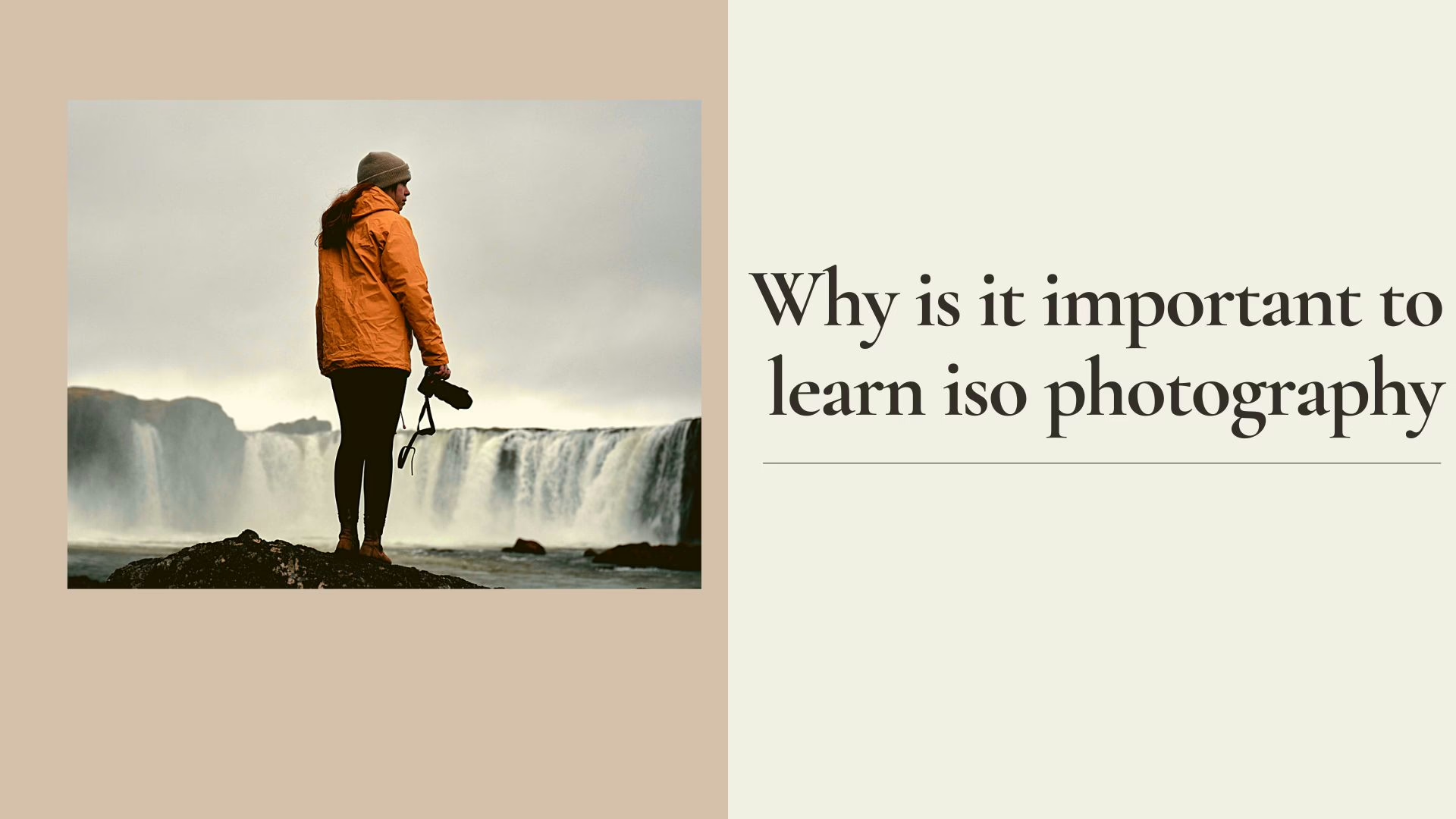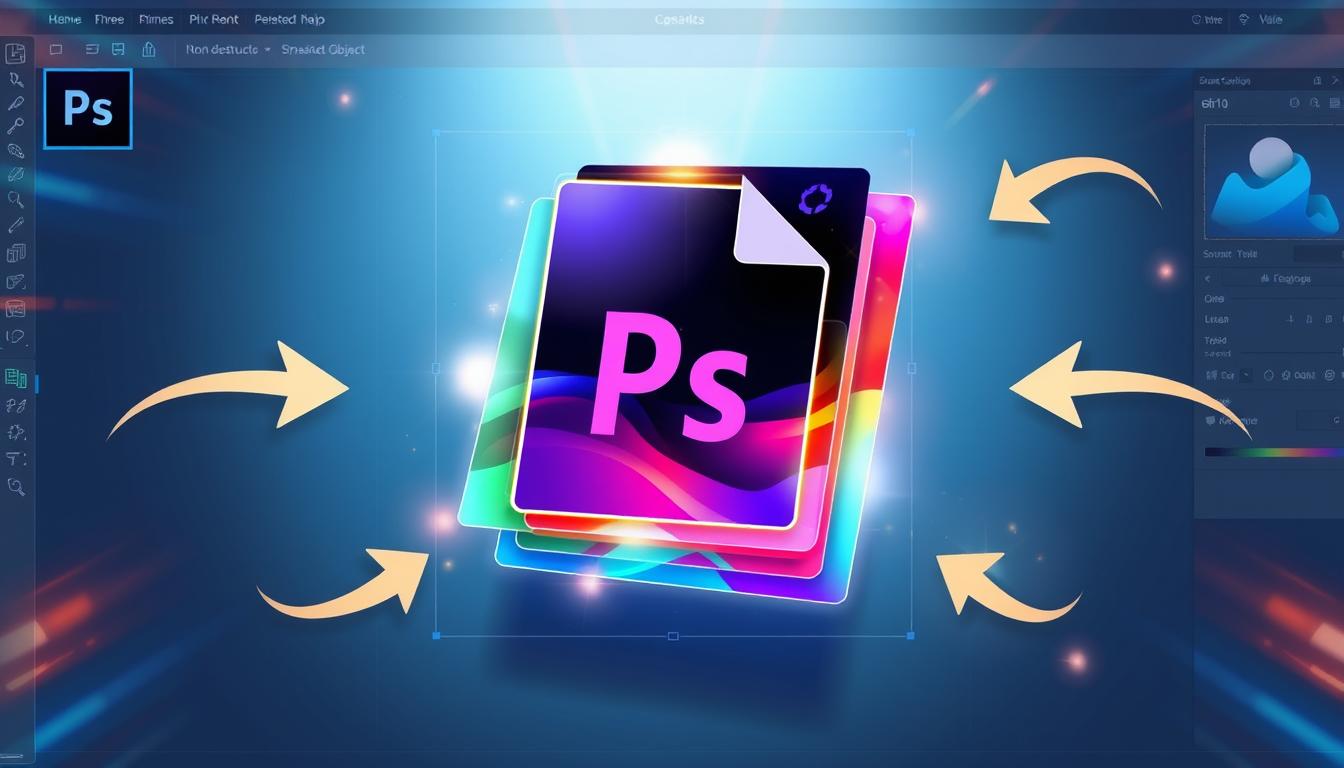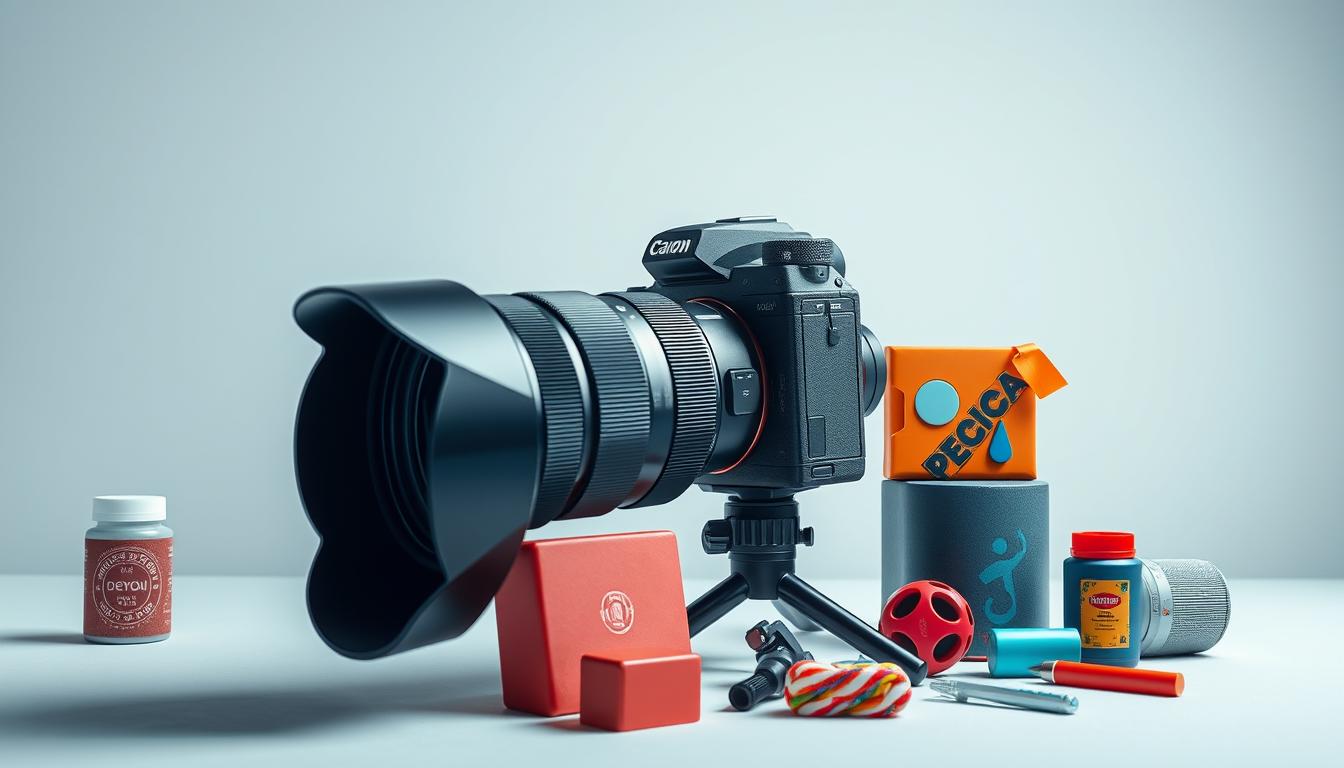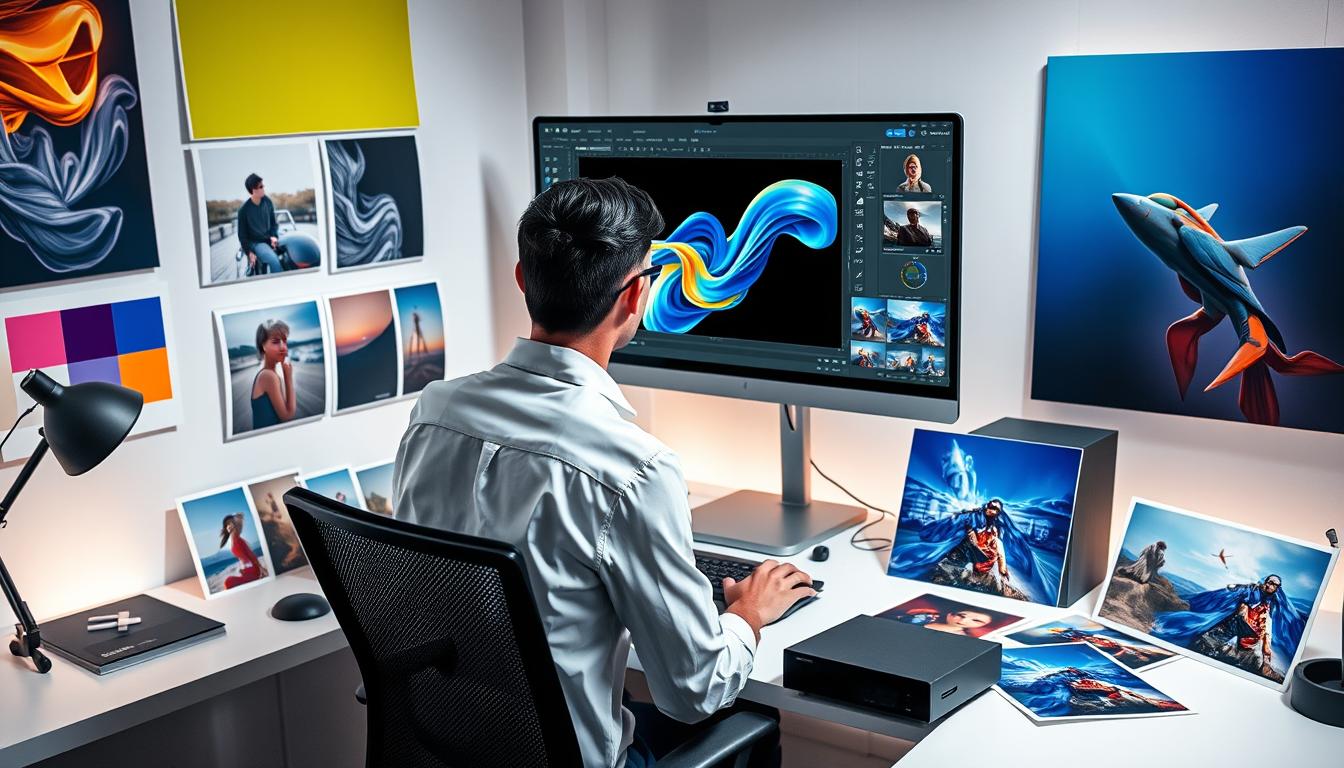As a photographer, knowing your camera settings is key to great photos. ISO is a crucial technique to master. It impacts your photo’s quality. Learning ISO well can boost your photography skills.
ISO is a basic but vital part of photography. It’s important to know how it works in digital cameras. This article will guide you through ISO photography. We’ll cover the basics, its history, and how to use it to improve your photos.
Introduction to ISO Photography
Getting good at ISO is essential for photographers. It directly affects your photo’s quality. By understanding ISO and using it right, you can enhance your photography skills. This will help you take amazing photos with the right settings.
Understanding the Fundamentals of ISO in Photography
When you start photography, knowing about ISO is key. ISO affects how well your photos turn out, especially in dark places. In digital cameras, ISO shows how well the camera’s sensor picks up light. A low ISO means the sensor is less sensitive, while a high ISO makes it more sensitive.
ISO is very important for photo quality. A low ISO, like ISO 100, works best in bright light and keeps photos clear. But, a high ISO, like ISO 6400, is better for dark places but might make photos grainy.
- ISO settings can be changed to match different light levels.
- Use a low ISO for outdoor shots and a high ISO for indoor or dark photos.
- Knowing how ISO impacts photo quality is crucial, especially in dark settings.
What ISO Actually Means in Digital Photography
In digital photography, ISO measures how well the camera’s sensor catches light. It’s not just a simple setting. ISO greatly affects photo quality, especially in dark places.
Why Is It Important to Learn ISO Photography for Better Images
Learning ISO photography is key to taking better photos. It lets you control your image’s exposure for amazing results. Aperture and shutter speed are important, and ISO is the missing piece. Mastering ISO helps you balance these elements for perfect exposure.
Here are some benefits of learning ISO photography:
- Improved image quality: Using ISO wisely reduces noise and grain in your photos.
- Increased creativity: ISO control lets you try new effects and styles, like low-light or high-contrast shots.
- Better control over aperture and shutter speed: Knowing ISO helps you choose the right aperture and shutter speed for your desired effect.
Learning ISO photography boosts your skills and lets you capture stunning images. It’s vital for both beginners and experienced photographers to achieve professional results. So, spend time learning about ISO and how it works with aperture and shutter speed to make incredible photos.
The Relationship Between ISO and Image Quality
Understanding ISO and exposure is key to great photos. ISO sensitivity greatly affects your photo’s quality. A low ISO means cleaner images with less noise, while high ISO can add grain and noise.
Changing the ISO affects your photo’s brightness. A higher ISO makes your photo brighter. But, it can also reduce the range of light and dark, making details harder to see.
Understanding Digital Noise and Grain
Digital noise and grain are common at high ISOs. They can ruin your photo’s quality. Finding the right ISO for your camera is crucial to avoid these issues.
ISO's Impact on Dynamic Range
ISO also affects your photo’s dynamic range. Dynamic range is the difference between light and dark in your photo. High ISOs can reduce this range, leading to less contrast and detail.
| ISO Setting | Dynamic Range | Digital Noise |
|---|---|---|
| Low (100-400) | High | Low |
| Medium (800-1600) | Medium | Medium |
| High (3200-6400) | Low | High |
Knowing how ISO affects image quality helps you take better photos. You can choose the right ISO to get the best results.
Mastering Low-Light Photography Through ISO Control
Controlling the ISO is key in low-light photography. Digital noise is a big problem in dark settings. But, adjusting ISO settings can help reduce it. Different photography genres like portrait, landscape, and street photography need different low-light approaches.
To get better at low-light photography, try these tips:
- Use a tripod to keep the camera steady and avoid shake.
- Adjust the ISO settings to find the best balance between quality and noise.
- Apply noise reduction techniques like long exposure or high ISO reduction to lessen digital noise.
By using these tips and practicing, you can take amazing low-light photos.
Mastering low-light photography is all about experimenting. Find the right ISO settings, noise reduction, and composition. With time and effort, you’ll get professional-looking photos and improve your skills.
| Photography Genre | Low-Light Tips |
|---|---|
| Portrait | Use a wide aperture and adjust the ISO settings to capture a shallow depth of field. |
| Landscape | Use a tripod and adjust the ISO settings to capture a long exposure image with minimal digital noise. |
| Street | Use a fast lens and adjust the ISO settings to capture a sharp image with minimal digital noise. |
The ISO Triangle: Aperture, Shutter Speed, and ISO Working Together
Understanding the ISO triangle is key to taking great photos. It includes aperture, shutter speed, and ISO. These settings work together to control how much light gets into your camera.
Getting good at the ISO triangle takes time and practice. But with effort, you can learn to balance these settings. This means knowing how each setting affects the others and making the right changes.
Balancing the Three Pillars of Exposure
Think of the relationship between the three legs of the ISO triangle: the aperture, which regulates the amount of light that can enter the camera, the shutter speed, which controls how quickly the camera can stop moving, and the ISO, which controls the camera’s sensitivity to light.
By adjusting these settings, you can get the right exposure. This makes your photos sharp, bright, and full of detail.
Common Mistakes to Avoid
When using the ISO triangle, some mistakes are common. Using too high an ISO can cause digital noise. And using too small an aperture can make your photos blurry.
By understanding the ISO triangle and making the right changes, you can avoid these mistakes. This way, you can take amazing photos that show off your skills.
Creative Applications of ISO in Different Photography Genres
ISO is key in photography, especially in low light. It affects image quality a lot. For portraits, a low ISO creates a cozy feel. But for landscapes, a high ISO captures the beauty of sunsets or sunrises.
In street and wildlife shots, low-light photography is common. Adjusting ISO helps freeze moments in dim places. Finding the right ISO, aperture, and shutter speed is crucial for great image quality.
Some genres that use ISO creatively are:
- Portrait photography: uses low ISO for natural light and high ISO for dramatic effects
- Landscape photography: uses low ISO for scenic views and high ISO for astrophotography
- Street photography: uses high ISO for capturing action in low-light conditions
- Wildlife photography: uses high ISO for freezing motion in low-light environments
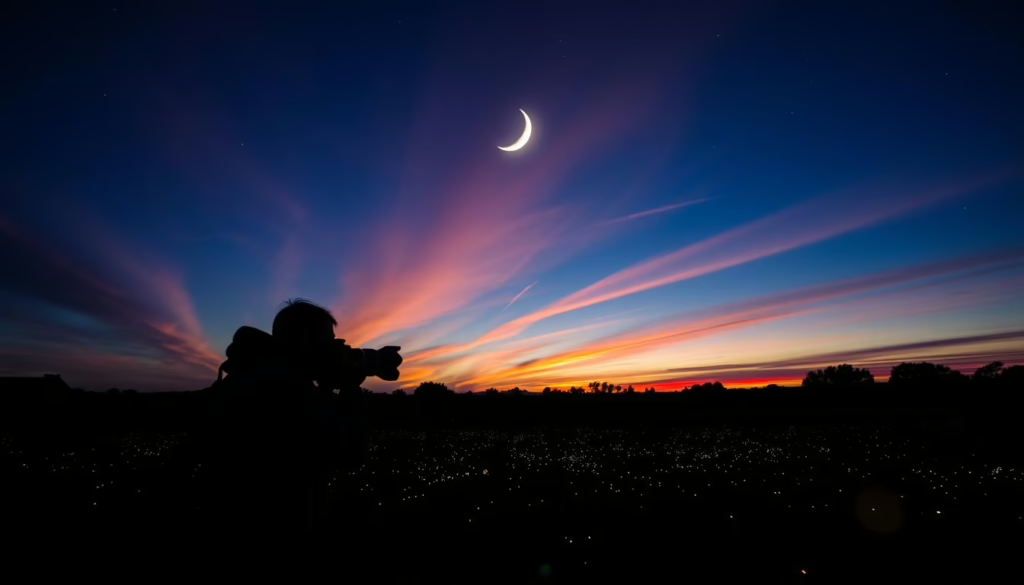
Learning to control ISO opens up new creative paths. It ensures top-notch image quality in any light.
Advanced ISO Techniques for Professional Results
As you grow in photography, learning advanced ISO techniques is key. It’s important to know how ISO, aperture, and shutter speed work together. This knowledge will elevate your photography.
ISO’s impact is tied to aperture and shutter speed. A big aperture lets more light in, so you can use a lower ISO. But, a quick shutter speed might need a higher ISO to capture motion well.
Auto ISO Features and When to Use Them
Many cameras have auto ISO features. They adjust ISO for you based on light. But, knowing when to use them and when to control ISO manually is crucial.
ISO Invariance and Modern Sensors
ISO invariance means your camera’s sensor stays sensitive to light, no matter the ISO. This is great in low light. Knowing about ISO invariance helps you choose the right ISO for your shots.
| Camera Model | ISO Range | Aperture Range | Shutter Speed Range |
|---|---|---|---|
| Nikon D850 | 64-25600 | f/1.4-f/32 | 1/8000s-30s |
| Canon EOS 5D | 100-32000 | f/1.2-f/32 | 1/8000s-30s |
Mastering ISO techniques and understanding its connection to aperture and shutter speed will boost your photography. You’ll get professional results.
Practical Tips for ISO Selection in Various Scenarios
Understanding exposure and ISO sensitivity is key for great photos. You need to adjust ISO settings for different scenarios. For example, indoors, use a lower ISO to avoid noise and get a bright image.
Outdoor and nature photography requires adjusting ISO based on light. On a sunny day, a low ISO works well. But on a cloudy day, a higher ISO is needed for the right exposure.
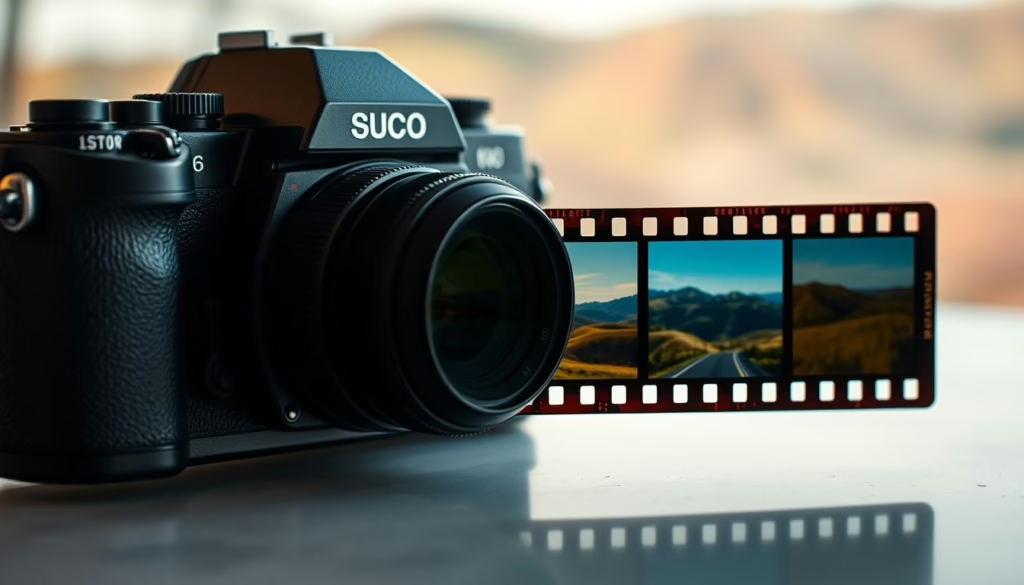
Indoor Photography ISO Guidelines
For indoor shots, think about the lighting and adjust your ISO. A good starting point is ISO 100 or ISO 200. This helps keep your photos clear and bright.
Outdoor and Nature Photography ISO Settings
Outdoor and nature photography calls for flexible ISO settings. On a sunny day, ISO 100 or ISO 200 is best. But on a cloudy day, ISO 400 or ISO 800 is better for light.
Event and Sports Photography ISO Management
Event and sports photography often happens in low light. So, use a higher ISO like ISO 1600 or ISO 3200. But watch out for noise and adjust ISO to get the best shot.
Common ISO Myths and Misconceptions Debunked
Exploring photography, you might hear many myths about ISO. It’s key to know what’s true and what’s not. This helps you make better choices and get better at photography. One myth is that high ISOs always cause digital noise, which harms image quality. But, this isn’t always true. Learning to handle digital noise is vital in many photography genres.
Here are some common ISO myths and misconceptions debunked:
- High ISOs are always bad: While high ISOs can introduce digital noise, they can also be useful in low-light situations.
- Low ISOs are always good: Low ISOs can result in better image quality, but they may not be suitable for all lighting conditions.
- ISO is the only factor affecting image quality: ISO is just one of the many factors that affect image quality, including aperture, shutter speed, and camera settings.
Knowing the truth about ISO helps you improve your photography. It lets you decide how to use ISO and manage digital noise. Try different ISO settings and techniques to find what suits your style best.
Conclusion
Mastering ISO is key to improving your photography techniques. Knowing how ISO impacts your camera settings lets you take amazing photos in different lights.
ISO is more than a number; it’s a tool for controlling light sensitivity. By adjusting ISO, aperture, and shutter speed, you can fully use your camera. This will take your photography to new levels.
Keep practicing and trying new things. The more you work with ISO, the easier it gets. With hard work and a desire to learn, you can make your photos outstanding. This will show in your camera settings skills.
FAQ
What is ISO and how does it function in photography?
ISO stands for International Organization for Standardization. It shows how light-sensitive your camera is. A higher ISO lets you capture images in low light, but it also adds digital noise.
How does ISO affect image quality?
Higher ISOs can make your photos noisier. This is because the camera’s sensor has to work harder to capture light. But, newer cameras handle high ISOs better, keeping your photos clear.
When should I use a higher ISO setting?
Use a higher ISO in low light, like indoors. It helps you get sharp photos without underexposing them. This is useful for capturing fast movements or in dim places.
How do I find the best ISO setting for my camera?
The best ISO depends on the light and what you want your photo to look like. Start with the lowest ISO and go up as needed. Try different ISOs to find the right balance for your photos.
What is the ISO triangle, and how does it relate to exposure?
The ISO triangle connects aperture, shutter speed, and ISO for exposure. Changing one affects the others. It’s about finding the right mix for your photo.
In what ways may I make imaginative use of ISO when shooting?
ISO can add unique effects to your photos. High ISOs are great for capturing fast movements in low light. Low ISOs can give a grainy, film-like look, perfect for street or documentary photos.
What are some common ISO myths and misconceptions?
Many think higher ISOs always mean worse photos. But, modern cameras handle high ISOs well. Another myth is using the lowest ISO to avoid noise. Sometimes, a higher ISO is needed for the right exposure and to avoid blur.

